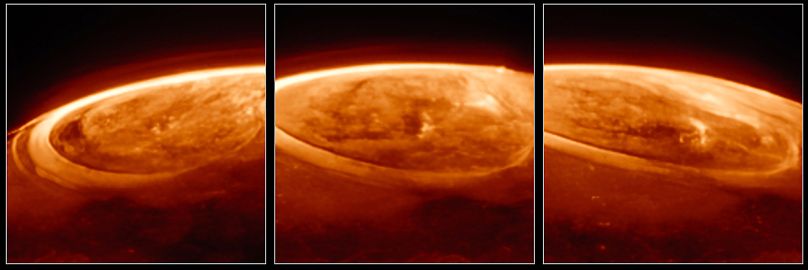The auroras on Jupiter are remarkably more luminous compared to those observed on our planet, as shown by fresh imagery captured by the James Webb Space Telescope.
The biggest planet in our solar system shows vibrant celestial displays as high-energy particles from outer space crash into atmospheric gases around its magnetic poles, much like the mechanism behind the aurora borealis, also known as the Northern Lights, here on Earth.
However, Jupiter’s variant exhibits significantly higher intensity, as reported by an international group of researchers after examining the images captured by Webb on Christmas Day in 2023.
Webb has previously captured Neptune's shimmering auroras with unprecedented clarity, more than half a century after they were initially glimpsed faintly during Voyager 2’s flyby.
In what ways do Jupiter’s auroras differ from those on Earth?
On Earth, auroras occur when charged solar particles collide with gases and atoms in the atmosphere around the planet’s poles, resulting in luminous bands of light that dance across the sky.
On Jupiter, besides the influence of solar winds, high-energy particles come from various sources as well, such as Jupiter’s volcanically active moon, Io.
Jupiter’s strong magnetic field subsequently propels these particles at incredibly high velocities, which are roughly several hundred times quicker compared to those seen in Earth’s auroras. When these fast-moving particles collide with Jupiter's atmosphere, they make the gases emit light.
James Webb has provided greater insights into their formation on Jupiter thanks to its specialized abilities.
The latest data and pictures were obtained using its Near-Infrared Camera (NIRCam) on December 25, 2023, by a group of researchers headed by Jonathan Nichols from the United Kingdom’s University of Leicester.
"What a Christmas present it was – it just blew me away!" said Nichols.
We anticipated observing the auroras slowly fading in and out, possibly taking around 15 minutes or so. However, what we witnessed was the entire aurora zone blinking and sparkling rapidly, changing within seconds.
The findings were published on Monday in the journal Nature Communications .

